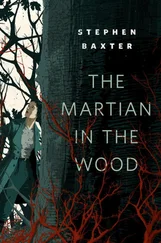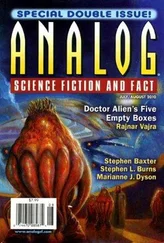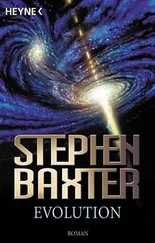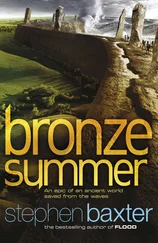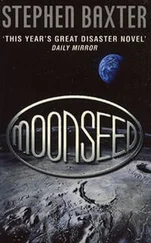“So if you wanted to think about picking apart the human genome—”
“ — here would be a good place to start.”
She thought of the Gaijin she had seen undoing itself, decades back, in Kefallinia. “Perhaps they are dismantling us. Taking apart the biosphere, to see how it works.”
“Perhaps. You know, humans always believed that when the aliens arrived, they would bring wisdom from the stars. Instead they seem to have arrived with nothing but questions. Now, they have grown dissatisfied with our answers, and are seeking their own… Of course, it might help if they told us what it is they are looking for. But we are starting to guess.”
“We are?”
They walked on, slowly, conserving their energy.
He eyed her. “For somebody who has traveled so far, you sometimes seem to understand little. Let me tell you another theory. Can you see any cactus, here in our desert?”
No, as it happened. In fact, now she thought about it, there were none of the desert plants she was accustomed to from the States.
Ben told her now that this was because of Australia’s long history. Once it had been part of a giant super-Africa continent called Gondwanaland. When Australia had split off and sailed away, it had carried a freight of rain-forest plants and animals that had responded to the growing aridity by evolving into the forms she saw here.
He rubbed his fingers in the red dirt. “The continents are rafts of granite that ride on currents of magma in the mantle. We think the continents merge and break up, moving this way and that, under the influence of changes in those currents.”
“All right.”
“But we don’t know what causes those magma currents to change. We used to think it must be some dynamic internal to the Earth.”
“But now—”
“Now we aren’t so sure.” He smiled thinly. “Imagine a huge war. A bombardment from space. Imagine a major strike, an asteroid or comet, hitting the ocean. It would punch through the water like a puddle, not even noticing it was there, and then crack the ocean floor.” His lips pursed. “Think of a scum on water. Now throw in a few rocks. Imagine the islands of dirt shattering, convulsing, whirling around and uniting again. That was what it was like. If it happened, it shaped the whole destiny of life on Earth. The impact structures wouldn’t be easy to spot, because the ocean floor gets dragged under the continents and melted. After two hundred million years, the ocean floor is wiped clean. Nevertheless there are techniques…”
A huge war. Rocks hurled from the sky, battering the Earth. Tens of millions of years ago. The hot dusty land seemed to swivel around her.
It sounded like an insane conspiracy theory. To attribute the evolution of Venus to the activities of aliens was one thing. But this… Could it possibly be true that everything she had seen today — the animals, the ancient land — was all shaped by intelligence, by careless war?
“Is this why you brought me to Australia? To tell me this?”
He grinned. “On Earth, as it is in Heaven, Madeleine. We seem to find it easy to discuss the remaking of remote rocky worlds by waves of invaders — even Venus, our twin. But why should Earth have been spared? ”
“And this is why you follow Nemoto?”
“If the Gaijin understand this — that we live in a universe of such dreadful violence — don’t you think they should, at the very least, tell us?…” Ben found what looked like a piece of thigh bone. “I’m not an expert,” he said. “But I think this was a diprotodon. A wombatlike creature the size of a rhino.”
“Another Gaijin experiment.”
“Yes.” He seemed angry again, in his controlled, internalized way. “Who knows how it died? From hunger, perhaps, or thirst, or just simple sunburn. These are archaic forms; this isn’t the ecology they evolved in.”
“And so they die.”
“And so they die.”
They walked on, and found more bones of animals that should have been dead for ten thousand years — huge, failed experiments, bleached in the unrelenting Sun.
The Saddle Point gateway was a simple hoop of some powder-blue material, facing the Sun, perhaps thirty meters across. Madeleine thought it was classically beautiful. Elegant, perfect.
As the flower-ship approached, Madeleine’s fear grew. Ben told her Dreamtime stories, and she clung to him. “Tell me…”
There was no deceleration. At the last minute the flower-ship folded up its electromagnetic petals, and the silvery ropes coiled back against the ship’s flanks, turning it into a spear that lanced through the disc of darkness.
Blue light bathed Madeleine’s face. The light increased in intensity until it blinded them.
With every transition, there is a single instant of pain, unbearable, agonizing.
…But this time, for Madeleine, the pain didn’t go away.
Ben held her as the cool light of different Suns broke over the flower-ship, as she wept.
Chapter 16
Icosahedral God
The Saddle Point for the Chaera’s home system turned out to be within the accretion disc of the black hole itself. Ben and Madeleine clung to the windows as smoky light washed over the scuffed metal and plastic surfaces of the habitat.
The accretion disc swirled below the flower-ship, like scum on the surface of a huge milk churn. The black hole was massive for its type, Madeleine learned — meters across. Matter from the accretion disc tumbled into the hole continually; X rays sizzled into space.
The flower-ship passed through the accretion disc. The view was astonishing.
The disc foreshortened. They fell into shadows a million kilometers long.
A crimson band swept upward past the flower-ship. Madeleine caught a glimpse of detail, a sea of gritty rubble. The disc collapsed to a grainy streak across the stars; pea-sized pellets spanged off Ancestor ’s hull plates. Then the ship soared below the plane of the disc.
A brilliant star gleamed beneath the ceiling of rubble. This was a stable G2 star, like the Sun, some five astronomical units away — about as far as Jupiter was from Sol. The black hole was orbiting that star, a wizened, spitting planet.
Soon, the monitors mounted on the Ancestor ’s science platform started to collect data on hydrogen alpha emission, ultraviolet line spectra, ultraviolet and X-ray imaging, spectrography of the active regions. Ben took charge now, and training and practice took over as the two of them went into the routine tasks of studying the hole and its disc.
Nemoto had hooked up to the Chaera’s tank a powerful bioprocessor, a little cubical unit that would enable the humans to communicate, to some extent, with the Chaera and with their Gaijin hosts. When they booted it up, a small screen displayed the biopro’s human-interface design metaphor. It was a blocky, badly synched, two-dimensional virtual representation of Nemoto’s leathery face.
“The vanity of megalomaniacs,” Madeleine murmured. “It’s a pattern.”
Ben didn’t understand. The Nemoto virtual grinned.
Ben and Madeleine hovered before a window into the Chaera’s tank.
If Madeleine had encountered this creature in some deep-sea aquarium — and given she was no biologist — she mightn’t have thought it outlandishly strange. After all it had those remarkable eyes.
The eyes were, of course, a stunning example of convergent evolution. On Earth, eyes conveyed such a powerful evolutionary advantage that they had been developed independently perhaps forty times — while wings seemed to have been invented only three or four times, and the wheel not at all. Although details differed — the eyes of fish, insects, and people were very different — nevertheless all eyes showed a commonality of design, for they were evolved for the same purpose, and were constrained by physical law.
Читать дальше
Конец ознакомительного отрывка
Купить книгу

